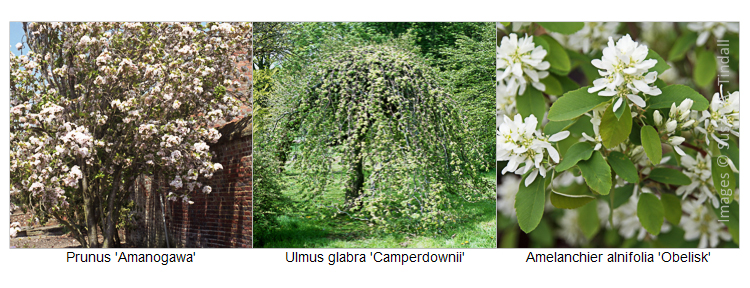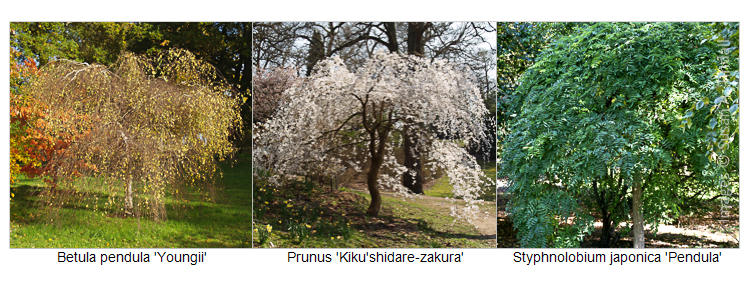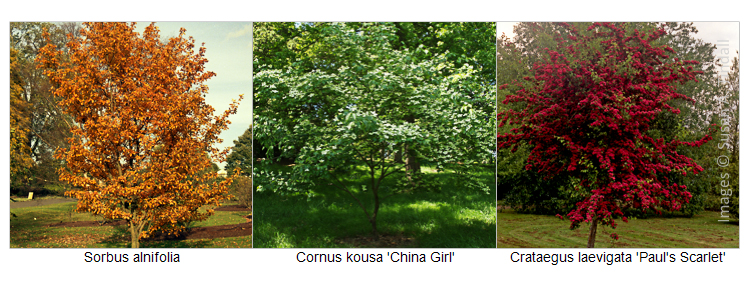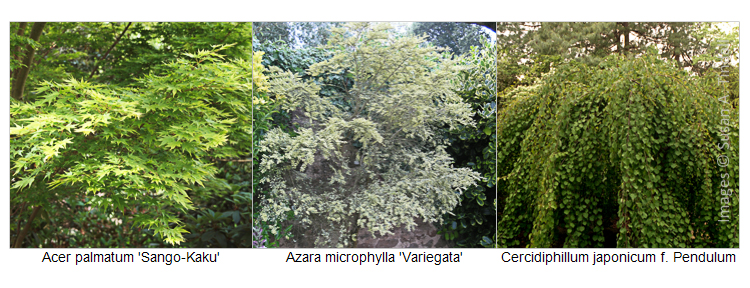Planning Your Small Scale Garden
Part 4 -Trees
Part 4 -Trees
Established trees have a strong presence, especially in a small garden. One can look up and into their structure. Their foliage dances in the breeze giving shifting patterns of light and shade on the ground. Solid trees have a welcome mass that can obscure unattractive features outside your garden. Their large size means their shape, flowers, fruit and foliage are high impact. Beyond this a tree is an investment, a commitment to your future life. It may even have been chosen to commemorate a special family event and can develop a significant emotional value. It is worth taking time to plan for your tree.
Apart from meeting their environmental needs – soil, water and temperature – consider their ultimate height and spread. They shouldn’t overwhelm your property or that of the neighbours – who may not welcome branches over their boundaries. Don’t plant too near drains, and remember that leaves falling in gutters can be a problem.
For a really narrow garden try the slender Prunus ‘Amanogawa’ with pale pink spring flowers or, with neutral or acid soil the smaller, more shrubby Amelanchier alnifolia ‘Obelisk’ with spring foliage interest and autumn colour as well as flowers.
For very compact gardens trees with a weeping growth habit could be chosen. These are often grafted onto an upright stem so that they will not get any taller. (In the event that a branch becomes upwardly mobile a quick cut with the secateurs soon resolves the problem!) An unusual choice would be Ulmus glabra ‘Camperdownii’, an elm with a picturesque growth habit. (Beware though it could eventually succumb to Dutch elm disease in high risk areas.)
Other notable weepers include the silver birch Betula pendula ‘Youngii’ that can be grafted at heights between 2 and 4 metres, or the small weeping crab apple Malus x scheideckeri ‘Red Jade loved for its flowers, fruit and autumn colour. Finally, a pink weeping cherry, Prunus ‘Kiku-shidare-zakura’ has bronzed young foliage as well. For something unusual try the Styphnolobium japonica ‘Pendula’ with creamy yellow flowers at summer’s end and striking foliage packed rigidly on dangling branches.
Where space is not so tight there are a good range of small trees that provide multi season interest. Hawthorns are solid and full of character, Crataegus laevigata ‘Paul’s Scarlet’ massed with double red flowers in spring, being one example. Rowan trees are hard to resist and among many Sorbus alnifolia with flowers, fruit and intense orange and red autumn colour is a multi-season delight.
Where soil is acid or neutral, a solid and chunky Cornus kousa variety with white flowers, red fruits and autumn colour, makes a solid specimen, try Cornus kousa var. chinensis ‘China Girl’. Alternately elegant and airy Cercidiphyllum japonicum f. Pendulum, with the scent of burnt sugar in autumn is a highly distinctive beauty. Where there is good deep soil, warmth and shelter try the exquisite tiny foliage of delicate Azara microphylla ‘Variegata’ or one of the Japanese maples with their wonderful foliage and exceptional autumn colour, such as the coral bark of Acer palmatum ‘Sango-Kaku’.
Finally consider some of the larger shrubs that can be trained as small trees. As they mature the lower branches can be removed to reveal the bare trunks to ornamental effect. Try the common spindle, Euonymus europaeus with red autumn colour and curious fruits. Finally the superb spreading cotoneasters such as Cotoneaster x watereri which has long outreaching branches that can be walked under. This will give you flowers, berries and autumn colour.
Enjoy!
Susan A Tindall




